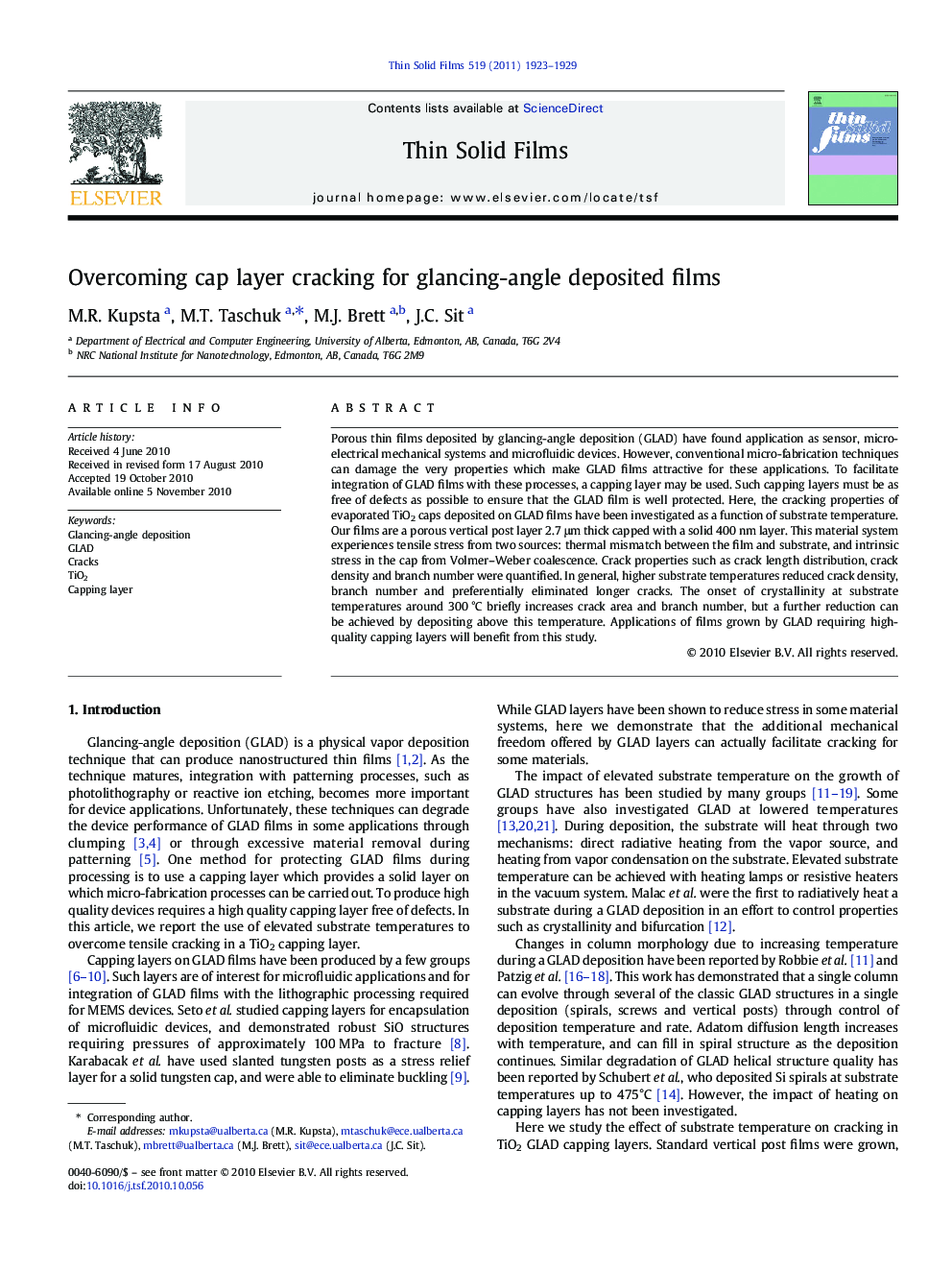| Article ID | Journal | Published Year | Pages | File Type |
|---|---|---|---|---|
| 10670573 | Thin Solid Films | 2011 | 7 Pages |
Abstract
Porous thin films deposited by glancing-angle deposition (GLAD) have found application as sensor, micro-electrical mechanical systems and microfluidic devices. However, conventional micro-fabrication techniques can damage the very properties which make GLAD films attractive for these applications. To facilitate integration of GLAD films with these processes, a capping layer may be used. Such capping layers must be as free of defects as possible to ensure that the GLAD film is well protected. Here, the cracking properties of evaporated TiO2 caps deposited on GLAD films have been investigated as a function of substrate temperature. Our films are a porous vertical post layer 2.7 μm thick capped with a solid 400 nm layer. This material system experiences tensile stress from two sources: thermal mismatch between the film and substrate, and intrinsic stress in the cap from Volmer-Weber coalescence. Crack properties such as crack length distribution, crack density and branch number were quantified. In general, higher substrate temperatures reduced crack density, branch number and preferentially eliminated longer cracks. The onset of crystallinity at substrate temperatures around 300 °C briefly increases crack area and branch number, but a further reduction can be achieved by depositing above this temperature. Applications of films grown by GLAD requiring high-quality capping layers will benefit from this study.
Related Topics
Physical Sciences and Engineering
Materials Science
Nanotechnology
Authors
M.R. Kupsta, M.T. Taschuk, M.J. Brett, J.C. Sit,
